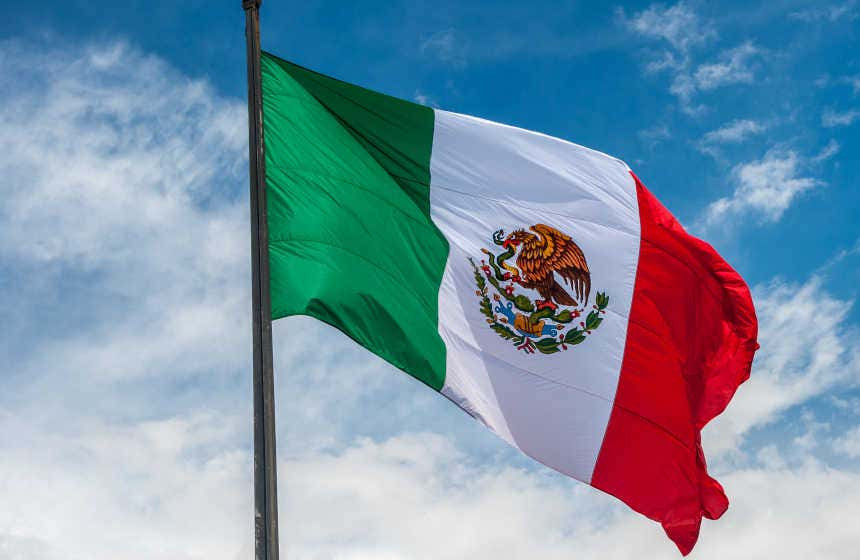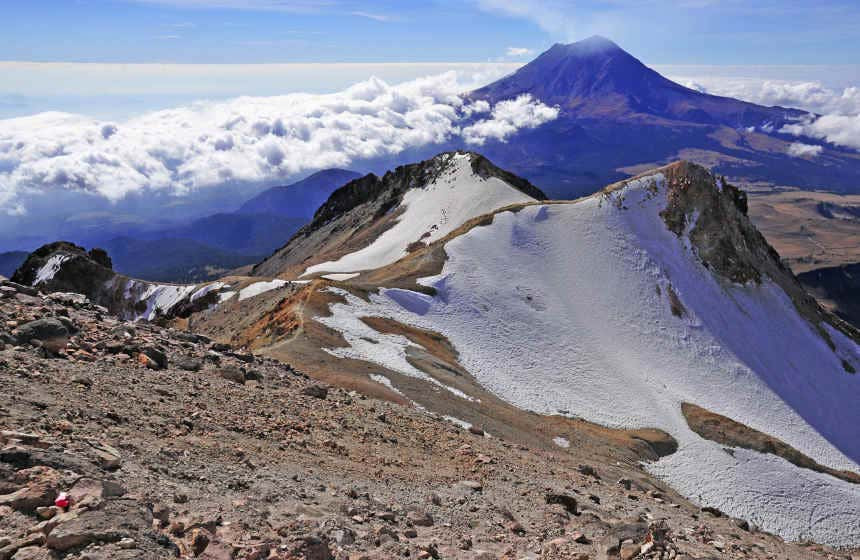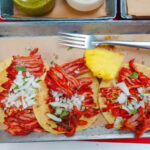Are you intrigued by the vibrant culture and rich history of Mexico? Let’s explore some fascinating aspects of this diverse country. At gaymexico.net, we aim to provide you with insights into Mexico’s unique charm, particularly tailored for the LGBTQ+ community. Join us as we reveal some unexpected and captivating facts, aiming to peak your interest to explore gay-friendly travel spots, inclusive events, and the rich tapestry of LGBTQ+ Mexican culture. Let’s dive into fun facts, cultural insights and LGBTQ+ travel.
1. Mexico Boasts a Diverse Linguistic Landscape
While over 99% of the population speaks Spanish, Mexico’s constitution does not declare an official language. There are 68 recognized languages, 63 of which are indigenous, showcasing the country’s rich cultural heritage. This linguistic diversity reflects the country’s complex history and the resilience of its indigenous communities. Mexico’s commitment to recognizing and preserving these languages highlights its inclusive approach to cultural identity.
1.1 The Significance of Indigenous Languages
The preservation of indigenous languages is crucial for maintaining cultural identity and heritage. According to UNESCO, many of these languages are endangered, making their recognition and promotion even more critical. Efforts to support these languages include bilingual education programs and cultural preservation initiatives.
1.2 Spanish in Mexico: A Dominant Yet Evolving Language
Spanish, while widely spoken, has also evolved in Mexico, incorporating indigenous words and phrases. This blending of languages reflects the country’s unique cultural fusion. The widespread use of Spanish facilitates communication and integration, while the preservation of indigenous languages ensures cultural diversity.
1.3 Language and LGBTQ+ Culture
Language plays a crucial role in the LGBTQ+ community, providing a means of expression and identity. In Mexico, LGBTQ+ individuals may use specific terms or phrases within their community, contributing to the linguistic diversity of the country. Understanding these nuances can enhance cultural sensitivity and inclusivity.
2. Mexico City is a Museum Lover’s Paradise
Mexico City ranks second globally, with approximately 170 museums, just behind London. This makes it a must-visit destination for museum enthusiasts. From ancient artifacts to modern art, the city offers a diverse range of cultural experiences.
2.1 Exploring the National Museum of Anthropology
The National Museum of Anthropology houses the world’s largest collection of ancient Mexican art. This museum offers an in-depth look at the pre-Columbian history of Mexico, showcasing artifacts from various indigenous cultures. A visit to this museum is essential for understanding Mexico’s rich heritage.
2.2 Immersing Yourself in Frida Kahlo’s World
The Frida Kahlo Museum, also known as Casa Azul, provides an intimate glimpse into the life and work of the iconic Mexican artist. The museum showcases personal objects, artwork, and photographs, offering a comprehensive view of her life and artistic journey. Frida Kahlo’s legacy continues to inspire and resonate with people worldwide.
2.3 LGBTQ+ Themes in Mexican Museums
Some museums in Mexico City feature exhibits that explore LGBTQ+ themes and histories. These exhibits contribute to a more inclusive and diverse representation of Mexican culture. Supporting these museums can help promote understanding and acceptance of LGBTQ+ identities.
3. Mexico’s Rich History Includes Numerous UNESCO World Heritage Sites
Mexico is home to 35 UNESCO World Heritage Sites, including 27 cultural sites, 6 natural sites, and 2 mixed sites. These sites reflect the country’s rich cultural and natural history, making it a treasure trove for history buffs and nature lovers alike.
3.1 Discovering the Historic Center of Mexico City and Xochimilco
The historic center of Mexico City and Xochimilco were the first sites in Mexico to be declared UNESCO World Heritage Sites in 1987. The historic center showcases stunning colonial architecture, while Xochimilco offers a unique glimpse into ancient agricultural practices through its canal system. Exploring these sites provides a deep connection to Mexico’s past.
3.2 The Cultural Significance of Xochimilco
Xochimilco’s canals and artificial islands, known as chinampas, represent a unique agricultural system developed by the Aztecs. These canals are now a popular tourist attraction, offering boat tours and a glimpse into traditional Mexican culture. Xochimilco’s vibrant atmosphere and historical significance make it a must-see destination.
 Xochimilco canal with people sailing down it on colorful boats.
Xochimilco canal with people sailing down it on colorful boats.
3.3 LGBTQ+ Friendly Heritage Sites
Many of Mexico’s UNESCO World Heritage Sites are located in cities and regions known for their LGBTQ+ friendliness. Exploring these sites can be a welcoming and enriching experience for LGBTQ+ travelers. Supporting local businesses and communities in these areas helps promote inclusivity and diversity.
4. The Mesoamerican Reef: A Natural Wonder
Mexico is part of the Mesoamerican Reef System, the second-largest coral reef in the world, stretching 1,000 kilometers between Mexico, Belize, Guatemala, and Honduras. This reef is a haven for marine biodiversity.
4.1 Exploring the Mesoamerican Reef
The Mesoamerican Reef is a paradise for divers and snorkelers, offering the chance to witness a stunning array of marine life. From colorful fish to sea turtles, the reef is teeming with biodiversity. Guided tours and excursions are available for those who want to explore this underwater wonderland.
4.2 Swimming with Whale Sharks
Between May and September, whale sharks visit the waters near the Riviera Maya. These gentle giants can grow up to 12 meters in length. Swimming with whale sharks is a unique and unforgettable experience. Responsible tour operators ensure the safety of both the swimmers and the whale sharks.
4.3 Conservation Efforts
Efforts are underway to protect the Mesoamerican Reef from pollution and climate change. Sustainable tourism practices and conservation initiatives are crucial for preserving this natural wonder for future generations. Supporting eco-friendly tour operators helps minimize the impact on the reef.
5. The Day of the Dead’s La Catrina: A Satirical Icon
The Day of the Dead is a significant holiday in Mexico, and the iconic La Catrina image has an interesting origin. It was designed by Jose Guadalupe Posada as a satire referencing the high-society European obsessions of Porfirio Diaz.
5.1 The Origins of La Catrina
La Catrina was originally created to critique the Mexican elite who imitated European fashion and culture. The image has since become a symbol of the Day of the Dead and a representation of Mexican identity. Understanding the history of La Catrina adds depth to the celebrations.
5.2 Celebrating the Day of the Dead
The Day of the Dead is a time to honor and remember deceased loved ones. Families build altars, decorate graves, and share stories and memories. The holiday is a celebration of life and a recognition of the cycle of life and death.
5.3 LGBTQ+ Representation in Day of the Dead Celebrations
The Day of the Dead is an inclusive holiday that welcomes all members of the community, including LGBTQ+ individuals. Many LGBTQ+ individuals honor their loved ones during the celebrations, and some create altars that reflect their identities and experiences. This inclusion adds to the rich tapestry of the holiday.
 Multiple figures with the typical La Catrina skull design in front of a red wall with skulls and guitars on it as decoration.
Multiple figures with the typical La Catrina skull design in front of a red wall with skulls and guitars on it as decoration.
6. UNAM: Latin America’s Largest University
The National Autonomous University of Mexico (UNAM), founded in 1551, is the largest university in Latin America. With multiple campuses across Mexico City, it is also considered one of the best universities in the world due to its extensive research and reputation.
6.1 The History of UNAM
UNAM has played a significant role in Mexican history, fostering intellectual and cultural development. The university has been a center for research, innovation, and social change. Its long and storied history makes it a landmark institution.
6.2 UNAM’s Academic Excellence
UNAM is renowned for its academic programs and research initiatives. The university offers a wide range of disciplines, from humanities to sciences. Its commitment to excellence has earned it a reputation as one of the top universities in the world.
6.3 LGBTQ+ Inclusivity at UNAM
UNAM has taken steps to promote LGBTQ+ inclusivity, offering resources and support for LGBTQ+ students and faculty. The university has established LGBTQ+ organizations and initiatives to foster a welcoming and inclusive environment. These efforts contribute to a more diverse and equitable academic community.
7. Chapultepec Park: A Historic Urban Oasis
Chapultepec Park, located in the heart of Mexico City, spans over 678 hectares and is filled with ruins dating back to the Mesoamerican pre-classical period. The park is a popular destination for locals and tourists alike.
7.1 The History of Chapultepec Park
Chapultepec Park has been a significant site throughout Mexican history, serving as a refuge, a battleground, and a cultural center. The park is home to numerous historical landmarks, including the National Museum of Anthropology and Chapultepec Castle. Exploring the park is like taking a journey through time.
7.2 Attractions in Chapultepec Park
Chapultepec Park offers a variety of attractions, including museums, gardens, lakes, and recreational facilities. Visitors can explore the National Museum of Anthropology, stroll through the botanical garden, or rent a boat on the lake. The park has something for everyone.
7.3 LGBTQ+ Activities in Chapultepec Park
Chapultepec Park is a popular gathering place for the LGBTQ+ community in Mexico City. The park hosts LGBTQ+ events and activities, providing a safe and welcoming space for community members. Visiting the park can be a great way to connect with the local LGBTQ+ community.
 An aerial view of Chapultepec park with Mexico City seen across it.
An aerial view of Chapultepec park with Mexico City seen across it.
8. The Symbolism of the Mexican Flag
The Mexican flag features three vertical stripes with different meanings throughout history. Green represents hope, white represents unity, and red represents the blood shed by national heroes.
8.1 The Colors of the Flag
The colors of the Mexican flag are deeply symbolic, representing the country’s history and values. Green symbolizes hope and independence, white represents unity and purity, and red represents the blood shed by those who fought for Mexico’s freedom. Understanding the colors adds depth to the flag’s meaning.
8.2 The Eagle and the Serpent
The emblem on the flag depicts an eagle devouring a serpent perched on a cactus. This image is derived from the legend of the founding of Tenochtitlan, the ancient Aztec capital. The legend tells of the Aztecs being guided to their new home by this sign.
8.3 The Flag and National Identity
The Mexican flag is a powerful symbol of national identity and pride. It is displayed prominently during national holidays and events, serving as a reminder of Mexico’s history and values. The flag unites Mexicans and represents their shared heritage.
 A close-up of the Mexican flag with a blue sky and some clouds behind it.
A close-up of the Mexican flag with a blue sky and some clouds behind it.
9. Volcanoes and Mythology: Izta-Popo Zoquiapan National Park
Izta-Popo Zoquiapan National Park in the state of Puebla is a sacred place according to native stories. The Iztaccíhuatl and Popocatépetl volcanoes, both exceeding 5000 meters in altitude, are the main attractions.
9.1 The Legend of Iztaccíhuatl and Popocatépetl
According to the mythology of the Tlaxcala people, the volcanoes represent the princess Iztaccíhuatl and the warrior Popocatépetl, who will remain together until the end of time. These mountains were considered deities and servants of the rain god Tlaloc.
9.2 Exploring the National Park
The national park offers breathtaking scenery and opportunities for hiking and exploration. Visitors can witness the stunning beauty of the volcanoes and learn about the local mythology. The park is a perfect destination for nature lovers and history enthusiasts.
9.3 LGBTQ+ Connections to Nature and Mythology
Nature and mythology often play a role in LGBTQ+ culture, providing metaphors for identity and resilience. The story of Iztaccíhuatl and Popocatépetl can be seen as a symbol of enduring love and commitment, resonating with LGBTQ+ individuals. Exploring these connections can enrich the experience of visiting the park.
 Iztaccíhuatl and Popocatépetl Volcanoes under a cloudy sky.
Iztaccíhuatl and Popocatépetl Volcanoes under a cloudy sky.
10. Chocolate: A Mexican Gift to the World
Mexico introduced chocolate to Europe. Ancient Mexican civilizations, such as the Olmecs, Aztecs, and Maya people, have been cultivating cacao trees for over 3,000 years.
10.1 The History of Chocolate in Mexico
Chocolate was a sacred and valuable commodity in ancient Mexican cultures. It was used in religious ceremonies and as a form of currency. The Aztecs believed that chocolate was a gift from the gods.
10.2 Chocolate’s Journey to Europe
After the Spanish conquest of the Aztec Empire, chocolate was imported to Europe. It quickly became a popular and luxurious treat. The Europeans added sugar and milk to the chocolate, transforming it into the sweet confection we know today.
10.3 Experiencing Chocolate in Mexico Today
Today, visitors to Mexico can experience traditional chocolate-making processes and sample a variety of chocolate treats. Chocolate workshops and tours are available in many cities, offering a glimpse into Mexico’s rich chocolate heritage. Enjoying chocolate in Mexico is a delicious and cultural experience.
 A close-up of someone
A close-up of someone
11. The Great Pyramid of Cholula: A Monumental Wonder
Mexico is home to one of the world’s largest pyramids, the Great Pyramid at Cholula. While not the tallest, it is the largest pyramid by volume known to exist today.
11.1 The History of the Great Pyramid
The Great Pyramid of Cholula was built over centuries, with each successive civilization adding to its size and complexity. The pyramid was eventually covered in earth and vegetation, leading the Spanish conquistadors to believe it was a natural hill.
11.2 Exploring the Pyramid Today
Today, visitors can explore the tunnels and chambers inside the pyramid and climb to the top for panoramic views of the surrounding area. The site offers a fascinating glimpse into the history and culture of ancient Mexico.
11.3 LGBTQ+ Travel to Cholula
Cholula is a welcoming destination for LGBTQ+ travelers, offering a safe and inclusive environment. The city is known for its vibrant culture and friendly locals. Exploring the Great Pyramid and the city of Cholula can be a rewarding experience for LGBTQ+ visitors.
 The Great Pyramid at Cholula seen on a sunny day with grass around it.
The Great Pyramid at Cholula seen on a sunny day with grass around it.
12. LGBTQ+ Considerations in Mexico: Safety and Acceptance
While Mexico City and other major tourist destinations are generally safe and welcoming for LGBTQ+ travelers, it’s important to be aware of regional variations in attitudes.
12.1 Legal Protections for LGBTQ+ Individuals
Mexico has made significant strides in LGBTQ+ rights, including the legalization of same-sex marriage in many states. However, laws and attitudes can vary across the country. Staying informed about local laws and customs is essential for a safe and enjoyable trip.
12.2 LGBTQ+ Tourism in Mexico
Mexico has become an increasingly popular destination for LGBTQ+ tourists, offering a range of gay-friendly accommodations, bars, and events. Cities like Puerto Vallarta and Mexico City are known for their vibrant LGBTQ+ scenes.
12.3 Resources for LGBTQ+ Travelers
Several organizations and websites provide information and resources for LGBTQ+ travelers to Mexico. These resources can help travelers plan their trips, find LGBTQ+-friendly businesses, and stay informed about safety and legal issues.
13. Delicious Mexican Cuisine: A Culinary Adventure
Mexican cuisine is renowned worldwide for its bold flavors, diverse ingredients, and rich culinary traditions. From street food to fine dining, Mexico offers a culinary adventure for every palate.
13.1 Traditional Mexican Dishes
Traditional Mexican dishes include tacos, enchiladas, mole, and tamales. Each region of Mexico has its own unique specialties, reflecting the local ingredients and culinary traditions. Sampling these dishes is a must for any visitor to Mexico.
13.2 Vegetarian and Vegan Options
Mexico offers a growing number of vegetarian and vegan options, reflecting the increasing demand for plant-based cuisine. Many traditional dishes can be adapted to be vegetarian or vegan, and there are also dedicated vegetarian and vegan restaurants in major cities.
13.3 LGBTQ+ Friendly Restaurants
Many restaurants in Mexico are LGBTQ+-friendly, offering a welcoming and inclusive environment for all diners. These restaurants often feature creative and innovative cuisine, showcasing the best of Mexican gastronomy. Supporting these businesses helps promote diversity and inclusion.
14. Popular Destinations for LGBTQ+ Travelers in Mexico
Mexico offers numerous destinations that are particularly popular with LGBTQ+ travelers, each with its unique charm and attractions.
14.1 Puerto Vallarta
Puerto Vallarta is known as one of the most gay-friendly cities in Mexico, boasting a vibrant LGBTQ+ scene, beautiful beaches, and a welcoming atmosphere. The city hosts numerous LGBTQ+ events throughout the year, including pride celebrations and festivals.
14.2 Mexico City
Mexico City offers a diverse range of cultural attractions, a thriving LGBTQ+ community, and a sophisticated urban experience. The city is home to numerous gay bars, clubs, and cultural events, catering to a wide range of tastes.
14.3 Cancun
Cancun is a popular tourist destination known for its stunning beaches, luxury resorts, and vibrant nightlife. While not as overtly gay-friendly as Puerto Vallarta or Mexico City, Cancun offers a range of LGBTQ+-friendly accommodations and activities.
15. Events and Festivals of Interest to the LGBTQ+ Community in Mexico
Mexico hosts a variety of events and festivals throughout the year that are of particular interest to the LGBTQ+ community.
15.1 Mexico City Pride
Mexico City Pride is one of the largest and most vibrant pride celebrations in Latin America, attracting hundreds of thousands of participants each year. The event features a parade, concerts, and cultural events, celebrating LGBTQ+ pride and diversity.
15.2 Puerto Vallarta Pride
Puerto Vallarta Pride is a popular event that celebrates LGBTQ+ pride and community. The event features a parade, parties, and cultural events, attracting visitors from around the world.
15.3 Day of the Dead Celebrations
The Day of the Dead is an inclusive holiday that welcomes all members of the community, including LGBTQ+ individuals. Many LGBTQ+ individuals honor their loved ones during the celebrations, and some create altars that reflect their identities and experiences.
These facts about Mexico offer a glimpse into the country’s rich cultural, historical, and natural heritage. For LGBTQ+ travelers, Mexico offers a welcoming and diverse experience, with numerous destinations and events catering to the community.
Are you ready to discover more about gay-friendly Mexico? Visit gaymexico.net for comprehensive travel guides, event listings, and community resources. Plan your trip today and experience the beauty and diversity of Mexico!
Address: 3255 Wilshire Blvd, Los Angeles, CA 90010, United States
Phone: +1 (213) 380-2177
Website: gaymexico.net
FAQ: Interesting Facts About Mexico
1. What is the official language of Mexico?
While Spanish is spoken by over 99% of the population, Mexico does not have an officially declared language in its constitution, recognizing 68 languages, including 63 indigenous ones.
2. How many museums are there in Mexico City?
Mexico City boasts approximately 170 museums, ranking second in the world after London, making it a paradise for museum enthusiasts.
3. How many UNESCO World Heritage Sites does Mexico have?
Mexico is home to 35 UNESCO World Heritage Sites, comprising 27 cultural sites, 6 natural sites, and 2 mixed sites, reflecting the country’s rich heritage.
4. What is the Mesoamerican Reef System?
The Mesoamerican Reef System is the second-largest coral reef in the world, stretching 1,000 kilometers between Mexico, Belize, Guatemala, and Honduras, offering stunning marine biodiversity.
5. What is the significance of La Catrina in the Day of the Dead celebrations?
La Catrina was originally designed by Jose Guadalupe Posada as a satire of the high-society European obsessions of Porfirio Diaz and has become an iconic symbol of the Day of the Dead.
6. What is UNAM and why is it important?
The National Autonomous University of Mexico (UNAM), founded in 1551, is the largest university in Latin America and is considered one of the best in the world due to its extensive research and reputation.
7. What is Chapultepec Park and what can visitors find there?
Chapultepec Park is a large urban park in Mexico City with ruins dating back to the Mesoamerican pre-classical period, along with attractions like museums, gardens, and a castle.
8. What do the colors of the Mexican flag symbolize?
The colors of the Mexican flag represent hope (green), unity (white), and the blood shed by national heroes (red).
9. What is the legend behind the Iztaccíhuatl and Popocatépetl volcanoes?
According to Tlaxcala mythology, the volcanoes represent the princess Iztaccíhuatl and the warrior Popocatépetl, who will remain together until the end of time.
10. What contribution did Mexico make to the world of chocolate?
Mexico introduced chocolate to Europe, with ancient civilizations like the Olmecs, Aztecs, and Maya cultivating cacao trees for over 3,000 years.
11. Where can LGBTQ+ travelers find more information about Mexico?
LGBTQ+ travelers can find comprehensive travel guides, event listings, and community resources at gaymexico.net.
12. What is the Great Pyramid of Cholula?
The Great Pyramid of Cholula is one of the world’s largest pyramids by volume, located in Mexico, and offers a glimpse into the country’s ancient history.
By exploring these interesting facts, you can gain a deeper appreciation for Mexico’s diverse and fascinating culture. Visit gaymexico.net to plan your trip and discover even more about this amazing country!

